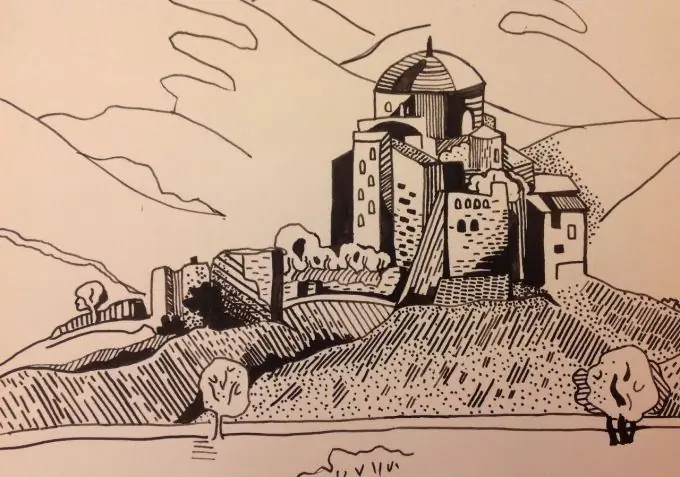Artists use a variety of materials and tools. All of them, be it a soft or bristled brush, nib, charcoal or pencil, require skill to handle it, the pen is no exception. The ability to draw with ink is important for sketching, performing various exercises, calligraphy, landscape and portrait sketches, and other types of graphic work. Of course, when developing the skill of drawing with ink, problems may arise, because this material is fluid and gets very dirty, and the tool (pen) may not be given immediately. In this article, we will look at the basic rules for using a pen and ink, discuss what mistakes should be avoided in the early stages of work.

The nib itself consists of two elements: a nib and a holder. The holder is a rod, it has a holder for the tip. You should be careful when buying a holder because the stylus (tip) may not fit under its mount. There are two types of tips: sharp and thick. It is better to start by drawing with a sharp tip, because they are easier to draw line and less resistance to paper than a "thick" nib (nib). When the nib is assembled, we can make sure that the size of the line will depend on the pressure: when pressure is applied to the tool, the flaps of the tip diverge, thereby setting the thickness of the line.
1) The hand in which we hold the pen should not be suspended (put the elbow on the table), only the hand moves freely. The second hand holds the sheet.
2) You don't need to dip the nib into the ink up to the shaft, just dip the nib (just above the slot on the nib). Excess ink should be removed by running the pen flat against the edge of the ink jar.
3) It is necessary to take the pen correctly and lead it at the right angle. The nib should run smoothly and not squeak or scratch the paper.
4) As already mentioned, ink is a flowing material, so you should organize your workplace: put on an apron, lay a newspaper on your desk. Prepare napkins just in case.
5) While working, you need to remember that ink takes time to dry, so you should start drawing from the opposite side of the sheet, counting from your working hand (if you are right-handed, start from the left side of the sheet).
6) You should not immediately get over to big work, it is always better to train on a draft. Please be patient as the pen is not easy to use.
7) Take ink on the pen carefully: do not overdo it, otherwise there will be a blot, and do not take too little, otherwise the pen may scratch the paper
8) Swiping the pen several times over the same spot is a bad idea. it is fraught with smudges, blots, unwanted bulges and scratched paper. You should not chase the absolute evenness of the line in the first couples. For the pen to listen to you, you need to practice and make numerous sketches.
The best option for the initial practice of skills can be considered writing flowers and plants, because drawing vegetation in general does not require strict straight lines. You will focus on getting a feel for the tool to achieve and quickly achieve the desired result. Further, it will be fashionable to start still lifes and landscapes.






